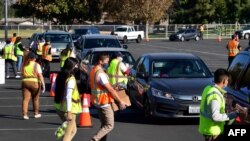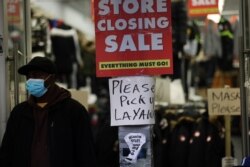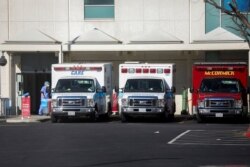Another 787,000 U.S. workers filed for unemployment compensation last week, the U.S. Labor Department reported Thursday, as the national government starts to make $300-a-week extra payments to the jobless on top of less generous state benefits.
The newest weekly claims total was basically unchanged, down 3,000 from Christmas week in late December, even as the coronavirus crisis continues to stress the American labor market 10 months after the pandemic swept into the country.
The latest weekly total is consistent with the number of claims over recent months. The weekly figures are well below the 6.9 million record number of claims filed late last March as the pandemic took hold in the U.S. but remain above the highest pre-pandemic level in records going back to the 1960s.
Nearly 10 million of the 22 million workers who lost jobs remain unemployed in the U.S. The jobless rate was 6.7% in November and many economists say the figure could remain elevated for months.
Hiring in November slowed for a fifth straight month, with employers adding the fewest jobs since April. The report for December will be released Friday.
U.S. employers have called back millions of workers who were laid off during business shutdowns earlier this year. Some hard-hit businesses have been slow to ramp up their operations again or have closed permanently, though, leaving workers idled or searching for new employment as coronavirus cases are surging by tens of thousands a day.
Some state and municipal officials have imposed new restrictions on businesses, forcing owners to once again lay off workers.
However, unemployed workers in the U.S. are in line soon to get some financial relief.
Outgoing President Donald Trump in late December signed into law a $900-billion coronavirus relief deal that includes the $300-a-week federal unemployment benefits for the next 11 weeks on top of the smaller state jobless benefits.
President-elect Joe Biden, who is set to be inaugurated Jan. 20, has called the aid package “a down payment” and says he will propose more coronavirus relief spending when he takes office.
But it took months for lawmakers and the White House to agree on how much money to spend in the relief deal Trump approved and to decide who would get it, an indication that even more assistance Biden wants is likely to be difficult to negotiate.
However, with Democrats winning both Senate runoff elections Tuesday in Georgia, Biden will have narrow majorities in both the Senate and House of Representatives.
The aid pact Trump signed includes $600 payments to more than 80% of adult Americans, excluding the biggest wage earners.
Democrats and Trump had called for increasing the amount to $2,000 but were blocked by Republican lawmakers who said the additional aid was too costly. With Democrats controlling the levers of power in Congress and the White House after Biden takes office, more aid could be approved as the death toll from the coronavirus mounts and tens of thousands of new infections are recorded daily.
While the U.S. economy, the world’s largest, has regained strength since the earliest days of the coronavirus pandemic, growth slowed in the last three months of 2020. The U.S. has now recorded 361,000 coronavirus deaths and 21.3 million infections, both figures higher than in any other country, according to Johns Hopkins University.
Economists, meanwhile, expect the U.S. economy’s recovery to gain momentum in the second half of 2021, after passage of the latest stimulus package and as millions of people are eventually inoculated against the disease.
More than 5.3 million Americans have been vaccinated so far, but the figure is far short of the 20 million the Trump administration predicted would get the shots by the end of December.















